Every fish tank owner should know that bacterias and filters are essential for life in the aquarium. Therefore, replacing your fish tank’s filter is an important task that should not be skipped.
However, we should do it the right way to avoid losing bacteria, which leads to decreased water quality.
So, if your old filter is starting to show signs of wear and tear, follow the steps listed below of National Park Aquarium and replace it with a new one as soon as possible!
Step-by-Step to Change a Fish Tank Filter
What you’ll need
- A new filter
- Aquarium pliers
- A bucket
- Old rags or towels
- Water conditioner
Step 1: Disconnect The Filter and Remove It
Switch off the filter and the air pump, and remove the powerhead from the aquarium.
If you have an under gravel filter, lift one end of the plate to release the water flow.
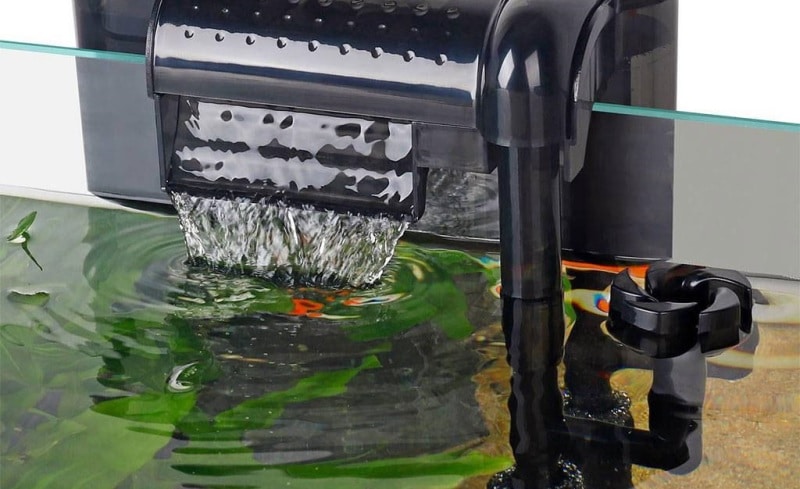
Step 2:. Disassemble The Filter
Use aquarium pliers to disconnect the hoses from the inlet and outlet ports on the back of the tank. Place these hoses in your bucket.
Unscrew the canister lid and remove it, careful not to spill any of the contents inside.
Remove the filter media from the canister and discard it. Some types of filter media can be cleaned and reused, but it’s generally recommended that you replace it every 4-6 weeks.
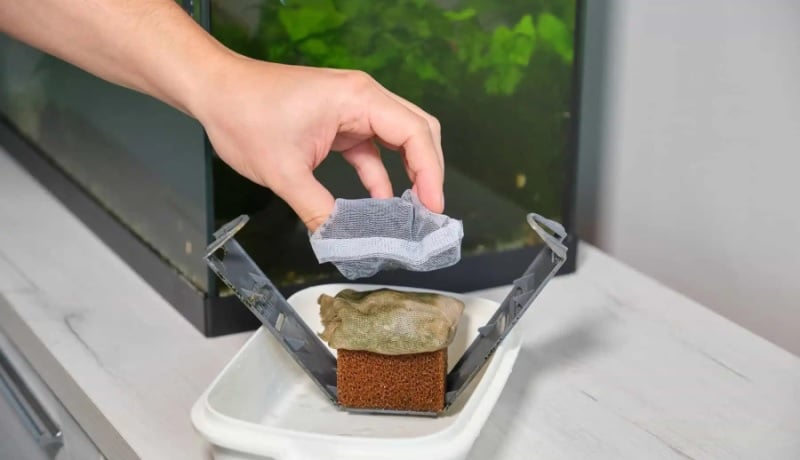
Step 3: Clean The Canister
Rinse the canister with clean water (do not use soap or detergent) and then refill it with fresh water.
Add a dechlorinating agent to remove chlorine and other harmful chemicals from the water.
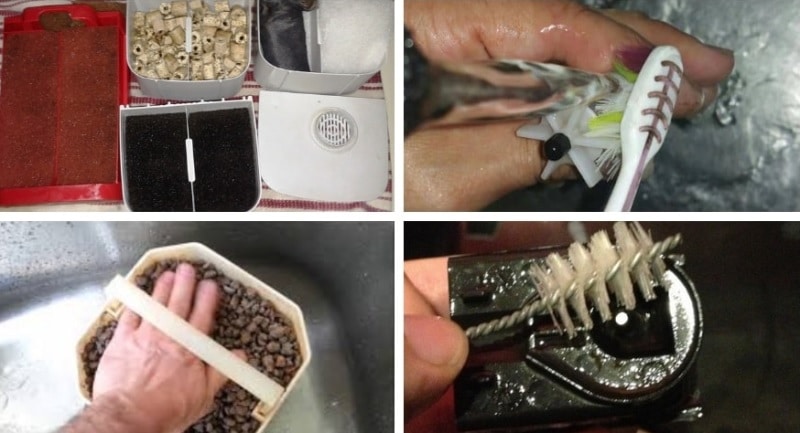
Step 4: Reassemble The Filter
You should put back and canister and filter media to their places. Then, make sure to reconnect the hoses to the inlet and outlet ports on the back of the tank.
Turn on the filter and air pump, and replace the powerhead if necessary.
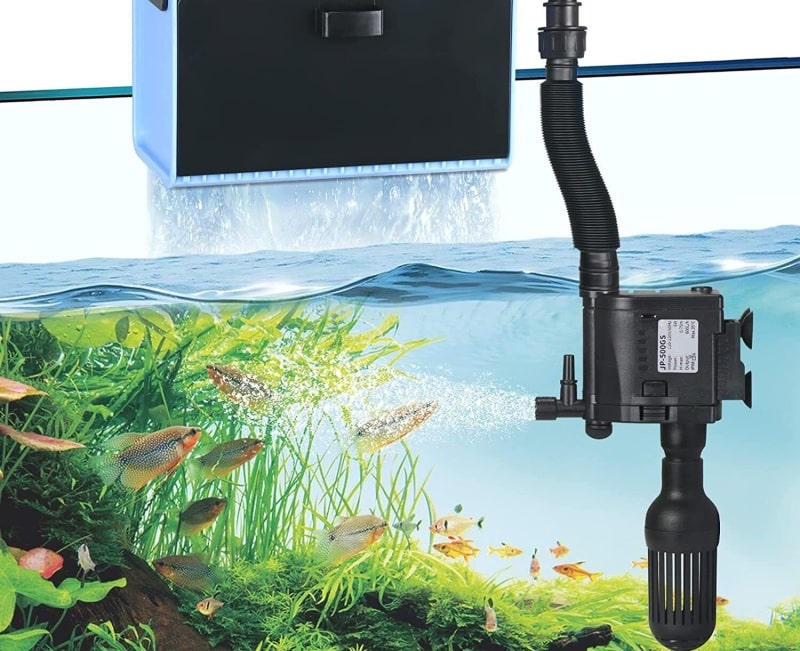
Step 5: Install The Filter and Monitor The Water
Bring back the filter to the fish tank and plug it in for a testing period.
Check the water level in the aquarium and add more water if necessary.
Monitor the water quality in the tank over the next few days and make sure the filter is working properly. If you see any sign of ammonia or nitrite, perform a partial water change immediately.
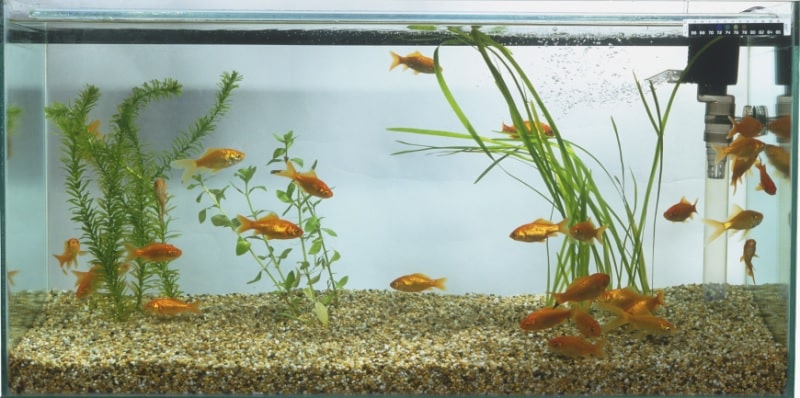
How to Change Aquarium Filter Without Losing Bacteria
If you have an aquarium, chances are you’ve had to change the filter at some point.
But did you know that if you’re not careful, you can lose all the beneficial bacteria in your tank when you do this?
1. Bacteria Types
First, it’s important to know that there are two types of bacteria in your aquarium: nitrifying bacteria and denitrifying bacteria.
- Nitrifying bacteria convert ammonia into nitrites
- Denitrifying bacteria convert nitrites into nitrates.
Both types of bacteria are essential for a healthy aquarium.
When you change your aquarium filter, you risk losing both types of bacteria.
2. Methods to Preserve The Bacterias
However, you can do a few things to minimize the impact on your bacteria population.
First, if possible, try to avoid complete filter changes. Instead, remove the old media and replace it with new media. This will minimize the number of bacteria that are lost.
If you need to do a complete filter change, you can do a few things to make sure you don’t lose all your bacteria.
- Take some of the old media and put it in the new filter. This will help seed the new filter with bacteria. Remove and replace no more than 25% of the filter media at a time.
- Do not rinse the filter media in treated water. This will kill the bacteria.
- Give the new filter time to become established before adding fish to the tank. This will give the bacteria time to grow and multiply.
- You can also add a product like Dr. Tim’s One & Only Nitrifying Bacteria to your aquarium before changing the filter. This product contains live nitrifying bacteria that will help to quickly repopulate your tank with the beneficial bacteria you need.
- Remember to never rinse your filter media in chlorinated water. This will kill all the beneficial bacteria in your filter and leave you starting from scratch.
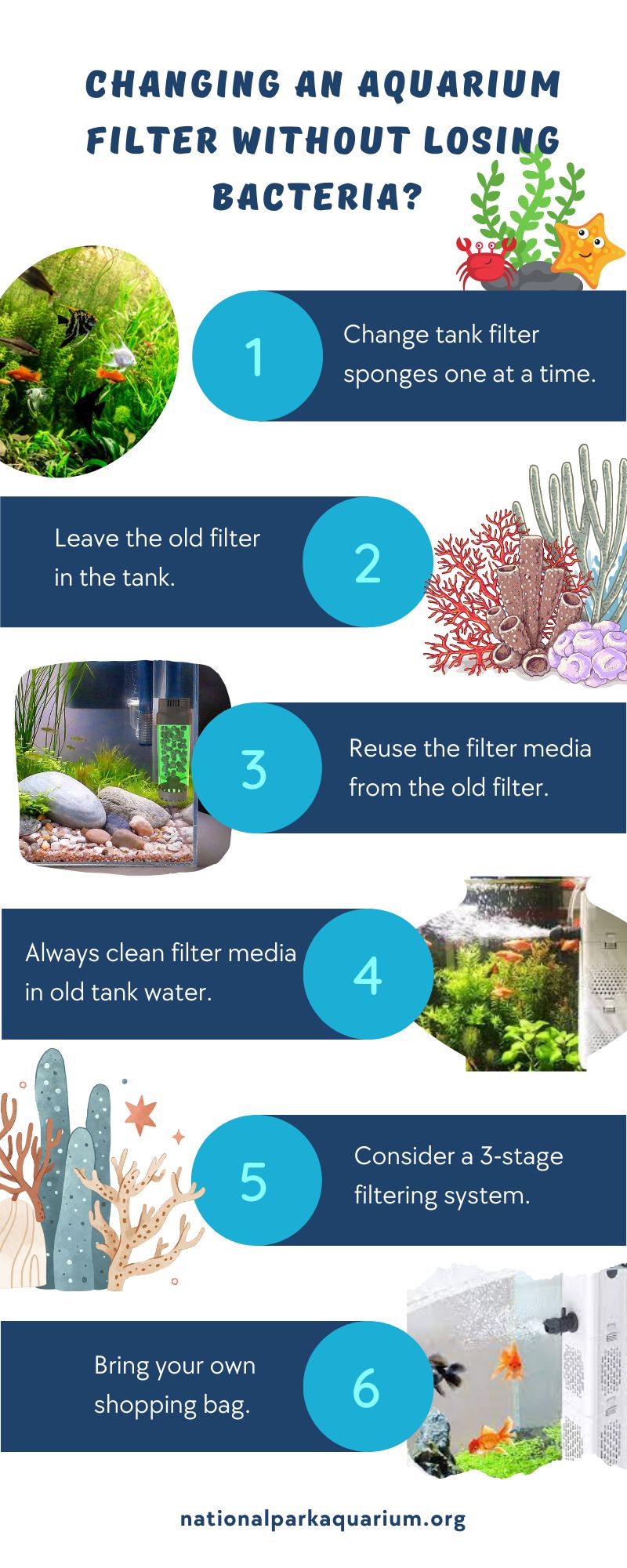
How Often to Change The Aquarium Filter
Most experts recommend changing your aquarium filter every 4-6 weeks.
However, this may vary depending on the size and type of your aquarium and the number and type of fish you have.
If you notice that your fish are acting stressed or that the water quality in your aquarium is deteriorating, it is a good idea to change the filter more frequently. This will help to remove any build-up of waste and toxins that may be causing problems for your fish.
If you have a larger aquarium or more fish, you may need to change your filter more often.
How Often Should You Change Your Fish Tank Filter Cartridge?
Keeping your aquarium’s filter clean and running smoothly is essential for the health and happiness of your aquatic inhabitants.
When it comes to changing your fish tank filter cartridge, a general guideline is to do it every 4-6 weeks.
However, it’s vital to stay attentive to the condition of the cartridge and regularly check the water quality in your tank. Also, be noted that different aquarium setups may require adjustments to the replacement schedule based on their specific needs.
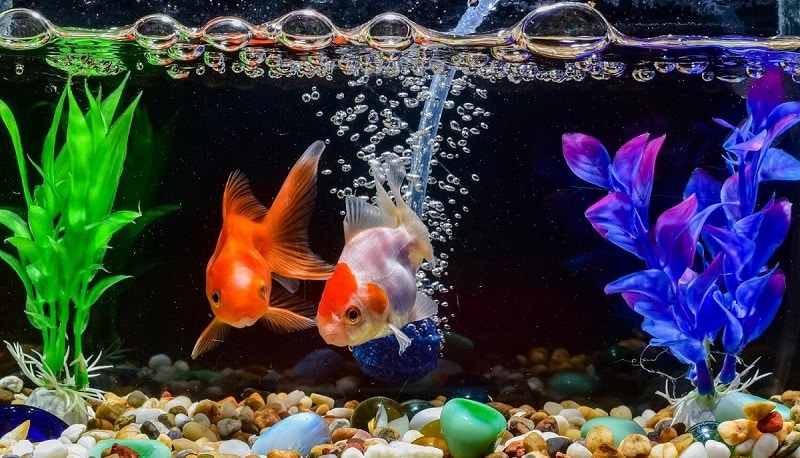
How Do Know If Filter Cartridge is Bad?
A deteriorating filter cartridge may exhibit signs such as reduced water flow, foul odors, discoloration, or visible debris. If you notice any of these indicators, it’s time to replace the filter cartridge.
How Do Know When To Change Fish Tank Filter?
Regularly monitor your filter’s performance and water quality. If you notice a decline in filtration efficiency, increased levels of ammonia or nitrite, or stressed behavior in your fish, it’s a sign that the filter needs attention or replacement.
Can Wash and Reuse Aquarium Filter Cartridges?
While some filter cartridges can be rinsed and reused, it’s generally recommended to replace them every 4-6 weeks. Reusing cartridges can lead to a decline in filtration effectiveness and may not adequately remove harmful substances.
Can a New Filter Kill Fish?
Introducing a new filter can cause fluctuations in water chemistry, potentially affecting the health of your fish. To minimize the impact, seed the new filter with beneficial bacteria from the old filter or use products containing live nitrifying bacteria.
Source: KGTropicals
Conclusion
Changing a filter on your fish tank is essential for keeping your fish healthy and your tank clean. By following the simple steps “how to change a fish tank filter” in this article, you can change your filter quickly and easily to get back to enjoying your aquarium.
Have you ever changed a fish tank filter before? What tips would you add? Let us know in the comments below.




